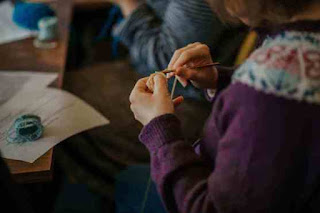A Very Scottish Stash
Following on from my Centre for Design and Material Culture #TextilesfromHome presentation yesterday, I promised a thread with links and notes for participants. This all follows below – hope it is interesting!
NB, the presentations was recorded and is available here
I talked about some key reading which affected my thinking over the #Scottish Stash project. The first was the late, great Doreen Massey – this article has useful links in a remembrance of her life and achievements
The second was Sara Ahmed on ‘happy objects’ – more can be found in her chapter in the Sage 2010 Affect Theory Reader ed. Gregg and Seigworth and in her sole authored 2010 book #ThePromiseofHappiness
If you’d like to know more about connections between the wool trade and Highland Clearances, this 1968 article is pretty thorough
If you’d like to read more about wool in Scottish textiles, Tweed by Fiona Anderson and Tartan + Tweed by Caroline Young and Ann Martin are great. I also highlighted Prof Lynn Abrams book on Shetland women – Myth and Materiality in a Woman’s World
The maven of writing about craft stash and its implications is Marybeth Stalp – there are links to her work here.
There are lots of works dealing with privilege in crafting generally and knit / crochet in particular, alongside wider issues about economic privilege, racism and decolonising ideas about heritage.
Craft Council are making a start here.
And there is work ongoing about barriers in the wider creative industries:
Read more here.
Regarding questions about touch and wellbeing, including at important personal transitions, have a look at the Stitchlinks project.
If you would like to look at my PhD on knit, crochet, wellbeing and Facebook, it is available here.
For more about ideas behind sheep farmers being #HeftedToHill, have a look at the work of
Ewan Allinson and check out #northernheartlands / #wideeyedcollective
Many of you will already know of and follow Louise Scollay, aka Woolwork, but do check out her site for posts and podcasts about knitting local (including guides about affordable options).
I was inspired to design the #PeigiAnndraShawl after a University of the Highlands and Islands SabhalMorOstaig course on using the sound archive TobarandDualchais in creative ways – they have this course coming up again if you’d like to know more.
TobaranDualchais has a sound archive which includes material from a range of sources, including the collections by Margaret Fay Shaw and John Lorne Campbell at CannaHouse, National Trust for Scotland.
We listened to part of this recording, a 1955 BBC World Service programme where Margaret Fay Shaw talks about her life on Canna.
Use the Tobar an dualchais archive to explore for Shaw and Campbell submissions. I’d like to pay respect to the knowledge and skill of Peigi or Mairi Anddra, who contributed hundreds of recordings – you can find them by name in the Advanced Search. The site is being overhauled currently and will change appearance but not principle in the future!
I strongly recommend the book Eilean – The island photography of Margaret Fay Shaw by Fiona Mackenzie (archivist at Canna House). More info here and the book is available to order through publishers Birlinn.
University of Edinburgh School of Scottish Studies Archive is a treasure of a sound and image archive, which brilliant expertise on hand when the ‘new normal’ gets established . If you are in the USA, American Folklore Society and Library of Congress would also be amazing sources to learn more about folklore and folksong connected to textiles and craft.



Comments
Post a Comment